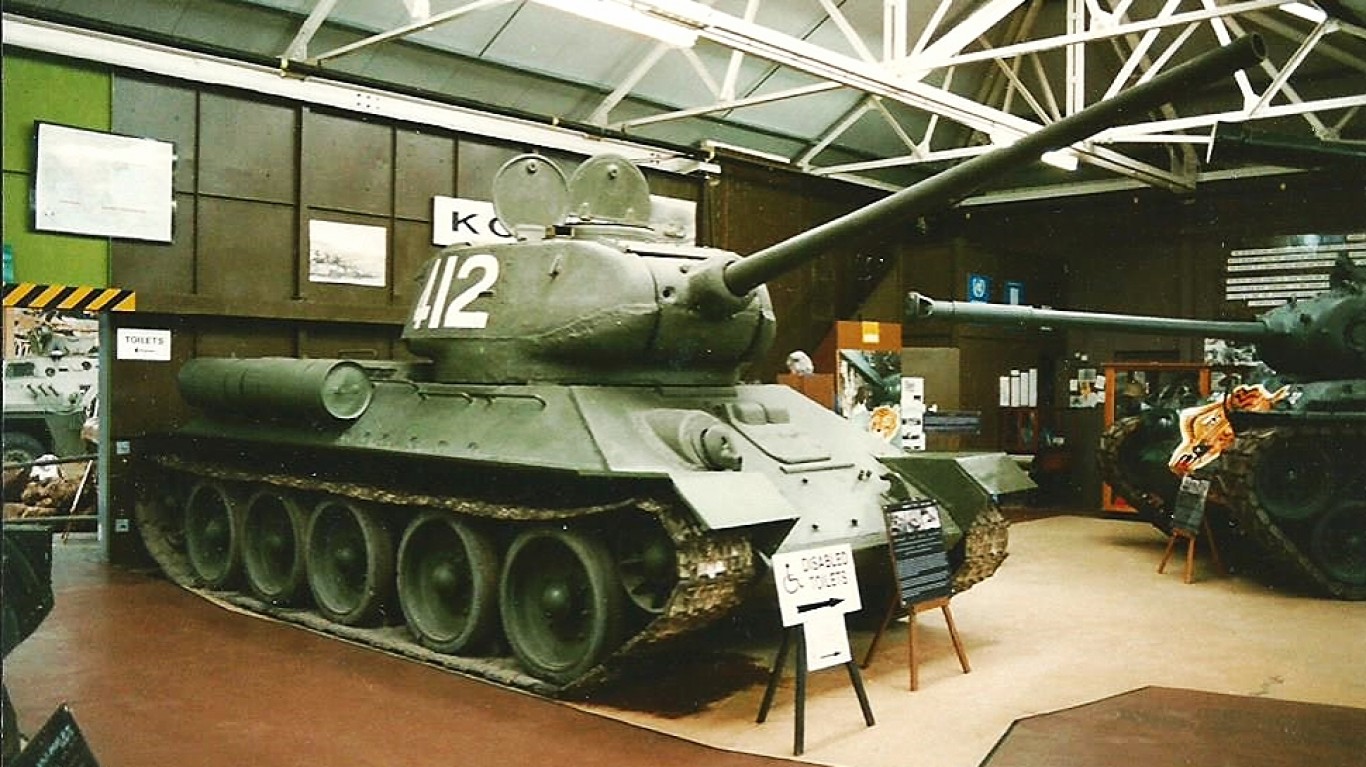
The history of combat can be defined by eras of technological development. Civilizations that have found smarter ways to wage war won out over those with archaic technology, solidifying, dynasties, borders, and empires. The trebuchet, the longbow, gunpowder, the rifle, the nuclear bomb. Each has won wars and signaled the start of a new epoch of war.
To identify 30 inventions that revolutionized combat, 24/7 Wall St. reviewed independent research from a variety of sources. These inventions were not always initially meant to be used in warfare, but when the technology was repurposed for military use, the technology forever changed the way wars were fought. (These are 18 of the deadliest weapons of all time.)
One notable example of this is the continuous track tread, the metal belts of a tank that allow it to roll over barbed wire and hedgerows with ease. The belts were initially invented in California to provide grain harvesters the traction needed to roll across bumpy fields. (It also works the other way around, as with these 19 commercial products that were invented by the military.)
Click here to see 30 inventions that shaped military history
Other inventions were always intended for military use, such as the six-foot English longbow that could send an arrow into a horseman from as far as a half-mile away. The weapon, invented by the Celts in what is Wales today, was designed specifically for combat and it radically altered the political landscape of Europe by giving the English a formidable battlefield advantage.
Other important inventions in military history, like modern global positioning systems or the internet itself, were always intended to be used by both civilians and soldiers.

1. The chariot
> First developed: 3000 B.C.
The earliest depictions of chariots are found on monuments from the Mesopotamian cities of Ur and Tutub, which depict parades of ox-drawn carts celebrating battle victories. Over the next several hundred years, the chariot became smaller, lighter, and faster, with the help of the spoked wheel and the introduction of draft horses. It evolved to become antiquity’s version of the tank, highly maneuverable and able to carry a driver and an archer directly into enemy foot soldiers.
[in-text-ad]
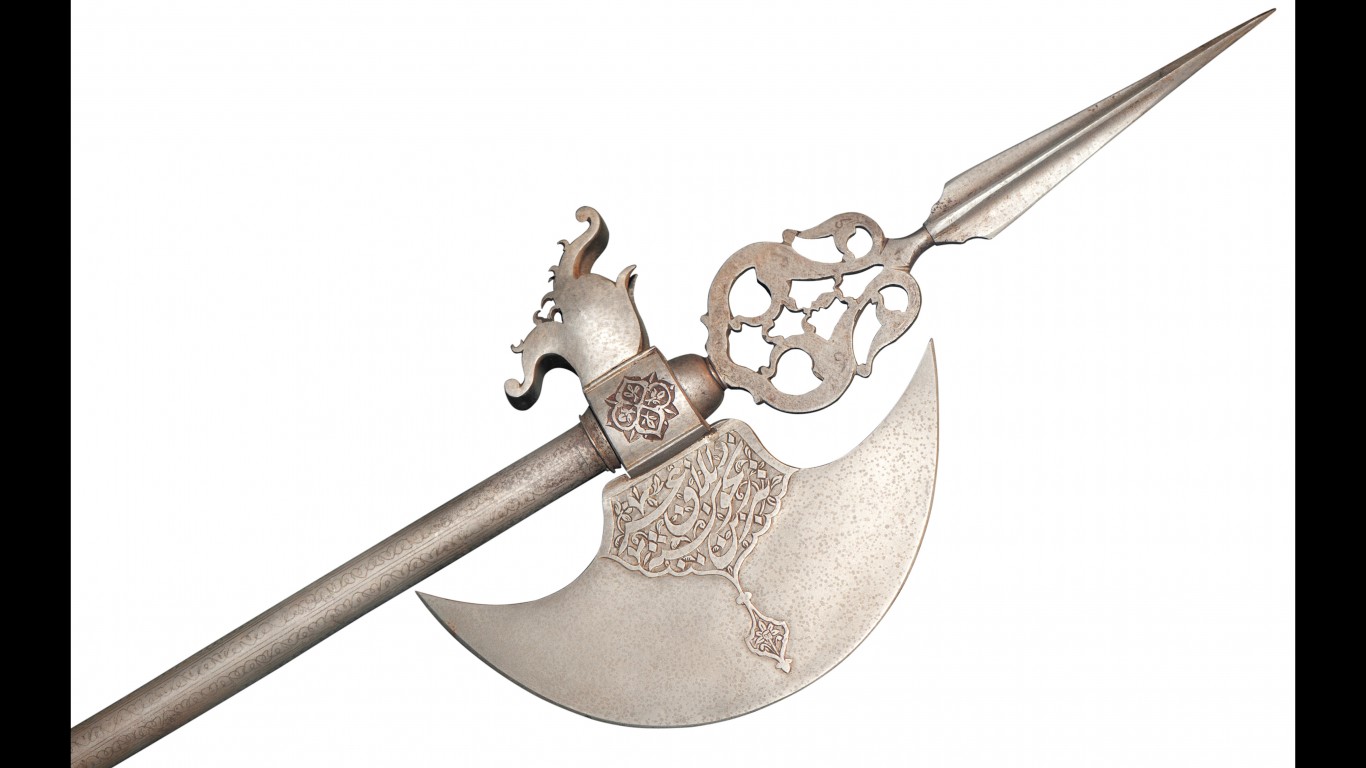
2. The halberd
> First developed: 2200 B.C.
The Bronze Age (circa 3300 B.C. to 1200 B.C.) brought about several innovations in warfare, including the halberd, a bronze ax blade with pointed tip mounted on the end of a long hardwood shaft. This elongated hand-held sickle was designed to cut through armored soldiers by unarmored infantry.
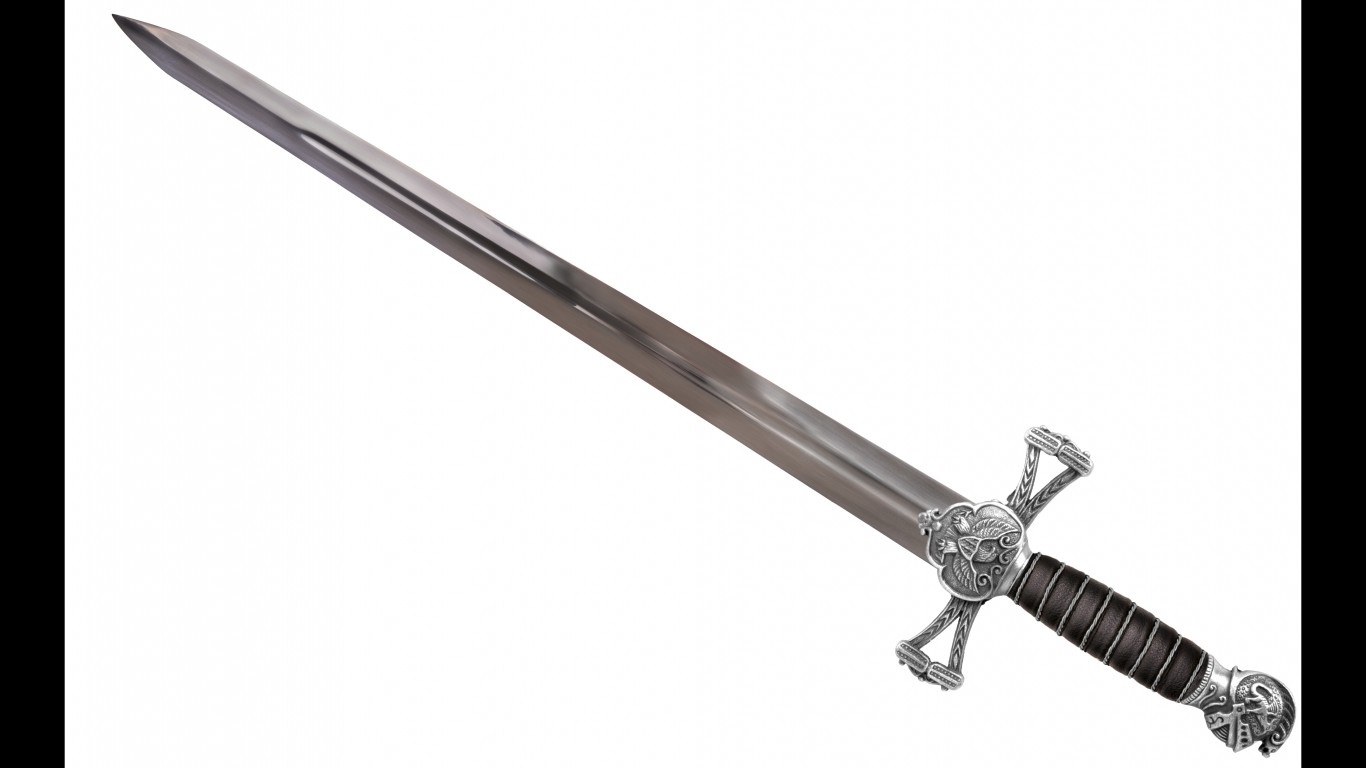
3. The sword
> First developed: 1200 B.C.
By the end of the Bronze Age, swords had evolved from the spearheads and daggers that were common weapons at the time. But these weapons were too soft to be used in prolonged blade-to-blade combat. By 1200 B.C., soldiers were using swords designed with a bulge along the blade that was better at sustaining blows. They were much smaller and lighter than medieval long swords, but they were stronger than their dagger-like predecessors.
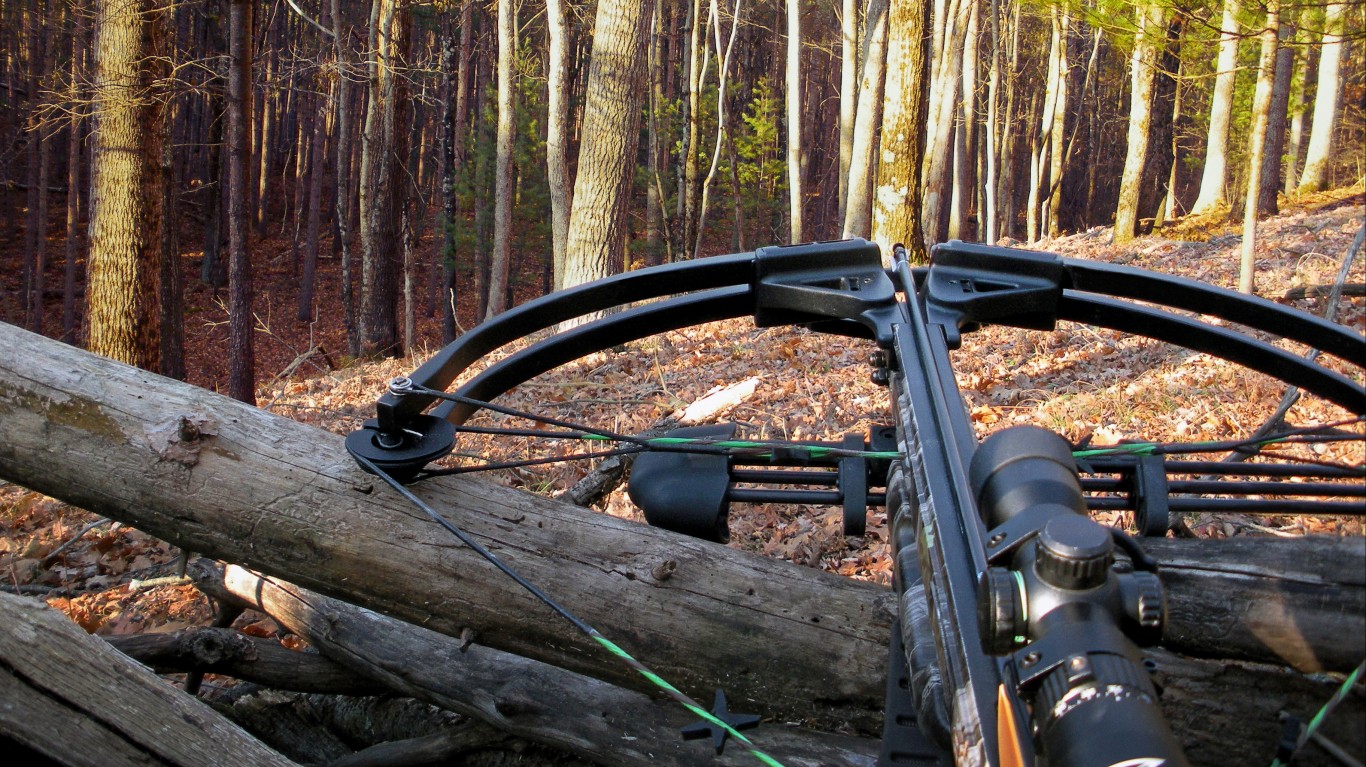
4. The crossbow
> First developed: 600 B.C.
The earliest evidence of crossbows can be found in tombs dating from before the 6th century B.C. in China. In the West, the crossbow based on a Greek design was first used at the Siege of Motya in Sicily in 397 B.C., according to Greek author Heron of Alexandria. The crossbow was capable of killing mounted armored warriors at a fraction of the cost of a trained knight on a war-horse. The advent of gunpowder and muskets in the 16th century put an end to the use of bows on the battlefields of Europe and elsewhere.
[in-text-ad-2]
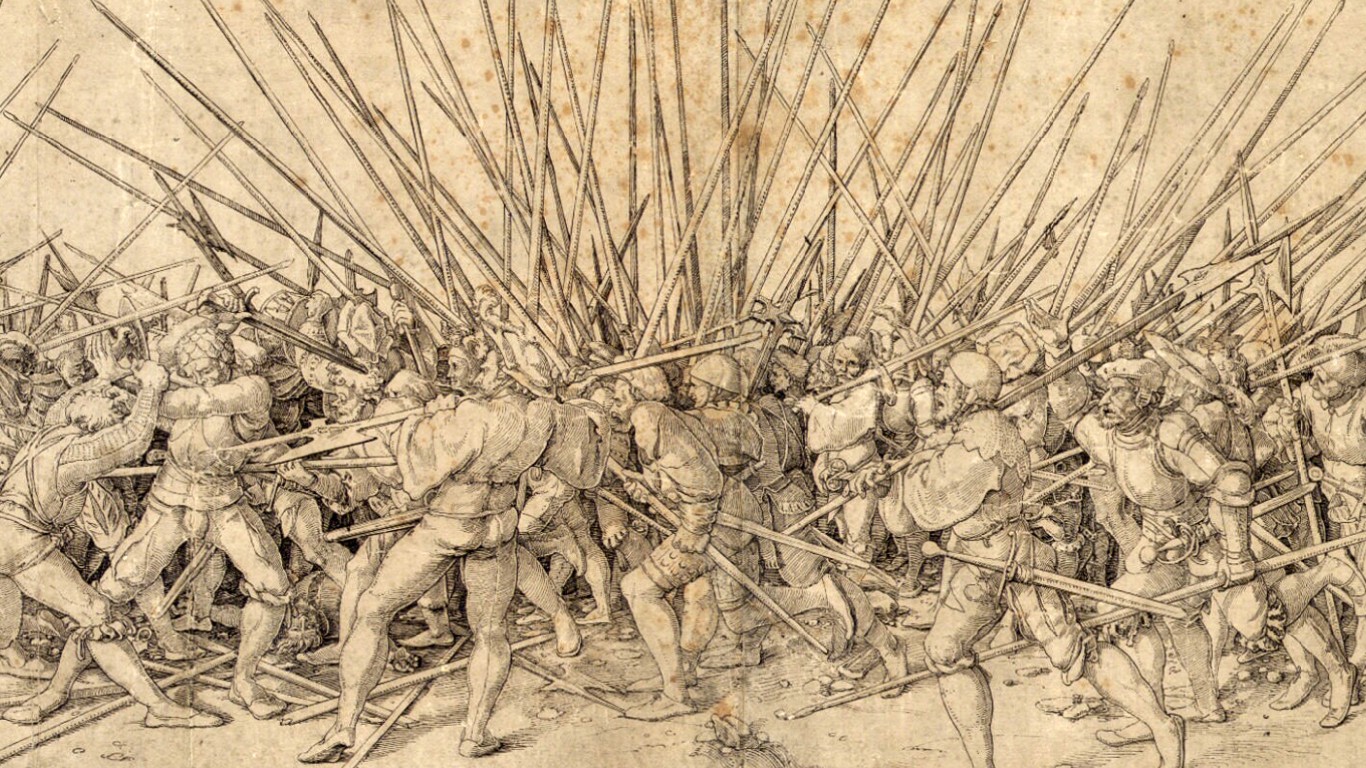
5. The pike
> First developed: Fifth century B.C.
This 18-foot spear emerged as an answer to the lance. The pike was longer, which meant that a line of pike-bearing foot soldiers could damage or kill charging horsemen before their lances could make contact with the first line of shield-bearing soldiers. By the 1300s, the Swiss were using a square tactical formation of pikemen to create a nascent version of the modern infantry unit.
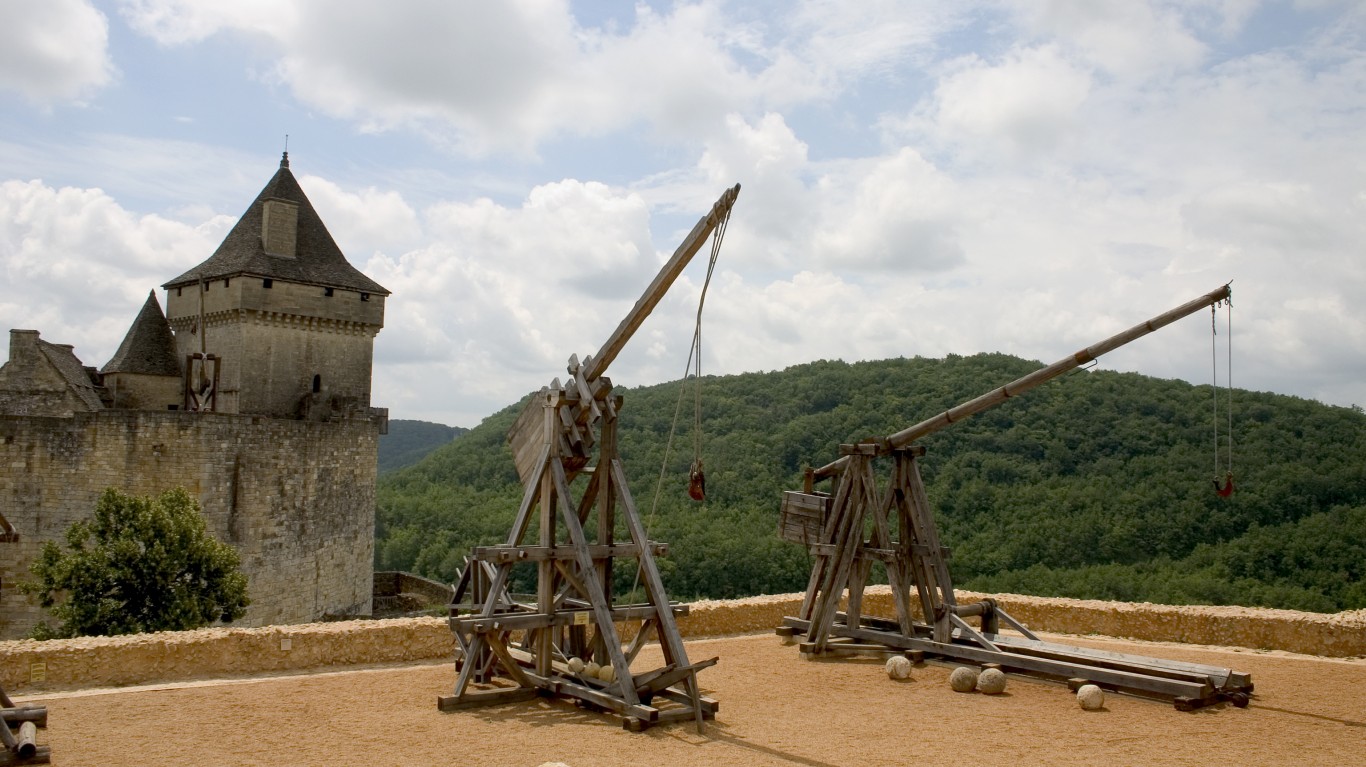
6. The trebuchet
> First developed: Fourth century B.C.
Like the crossbow and gunpowder, the earliest evidence of the trebuchet used in battle comes from ancient China. Acting like a giant sling powered by a large weight known as the counterpoise, the trebuchet became an important artillery-style weapon of medieval times. Modern replicas of the weapon show that a trebuchet with a 50-foot arm could throw a 300-pound stone up to 300 yards with a counterpoise weighing 10 tons. Though expensive to build and slow to reload, the trebuchet could handily topple stone walls, allowing soldiers to breach fortifications.
[in-text-ad]

7. Mail armor
> First developed: Fourth century B.C.
The earliest evidence of chainmail used in battle comes from depictions of Persian soldiers wearing chainmail shirts around 359 B.C. Later, the Romans would adopt chainmail they had seen used by the Gauls. Chainmail in different iterations would become common armor of the Old World from Europe to East and South Asia. Chainmail was used with plate mail to protect areas of the body requiring more flexibility like knees and elbows. The use of armor in battle declined rapidly after the advent of firearms.

8. Gunpowder
> First developed: 800
Accidentally invented by Chinese monks trying to discover a potion that would confer eternal life around the 9th century, gunpowder would have a profound impact on the evolution of warfare. It quickly made the use of arrows, pikes, and armor obsolete, ending medieval warfare. Even fortresses that had held out against trebuchets and battering rams couldn’t withstand the force of cannons like the ones used by the Ottomans to take Constantinople in 1493.
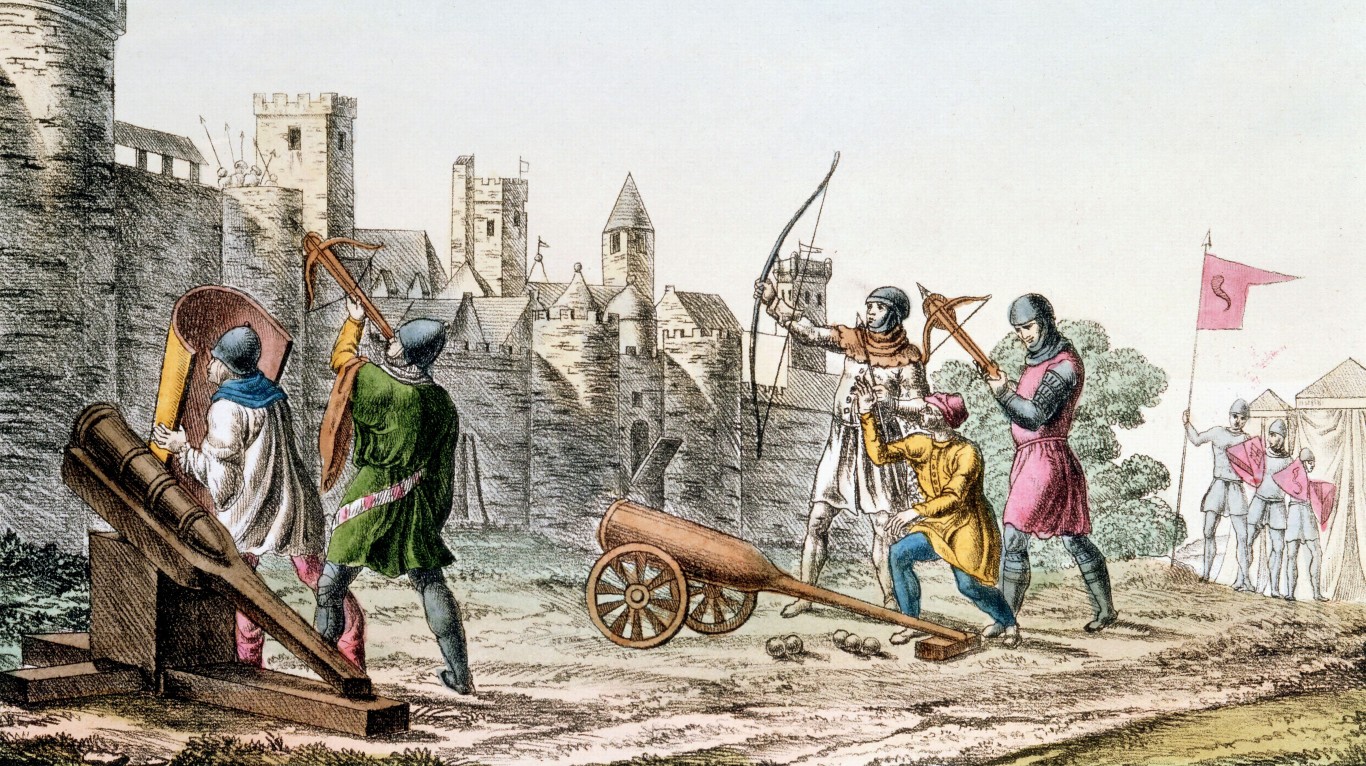
9. The English longbow
> First developed: 1180
Unlike the crossbow, which was considered such a lowly weapon used by inexperienced fighters that it was banned in some parts of medieval Europe, the English longbow (invented by the Celts in Wales) was considered a more civilized tool of war because of the amount of training and skill it required to use effectively. In the hands of an experienced archer, the six-foot longbow could lob an arrow up to half a mile away with enough force to knock a knight off his horse. English victories against the French at Crécy, Agincourt, and Poitiers are directly attributed to the weapon, which changed the political map of Europe. The advent of gunpowder-based firearms ended the reign of the bow.
[in-text-ad-2]
10. Plate armor
> First developed: 1200
Warriors have been using armor since before the historical record began, but this armor was made from tough animal skins or thick layers of fabric. Ancient Greeks and Roman used plated armor, but only as cuirasses and greaves to protect torsos and legs below the knees. While chainmail was developed in the fourth century B.C., the first full-body plated armor began to emerge only by around 1200 – and by the 1400s it was a common feature of the battlefield. Plate armor eventually replaced most uses of chainmail, but the advent of gunpowder-based firearms, which could easily penetrate steel plates, rendered this type of armor obsolete.
11. The matchlock
> First developed: 1411
The matchlock was the first firearm to incorporate a trigger and is therefore considered by many to be the first true gun. The matchlock’s S-shaped trigger, called a serpentine, was first developed by the Germans. The serpentine brought the tip of a lit match into contact with a small flash pan, igniting the gunpowder, allowing the soldier to aim down the barrel while pulling the trigger. Tweaks to the design of the matchlock over the decades eventually led to the advent of the flintlock rifle in the 1500s.
[in-text-ad]
12. Rifled barrels
> First developed: 1498
Early firearms had smooth barrels that often sent bullets in unpredictable directions. Barrel rifling, invented by German armorer August Kotter in 1498, stabilized the trajectory of the bullet, giving it a spin similar to the kind an American football quarterback puts on a ball when he passes it to a receiver down field. Barrel rifling made standing up during battles, which had been common, far more dangerous as guns became more accurate at longer ranges. Barrel rifling forced soldiers to the ground or behind cover, and it made helmets more important.
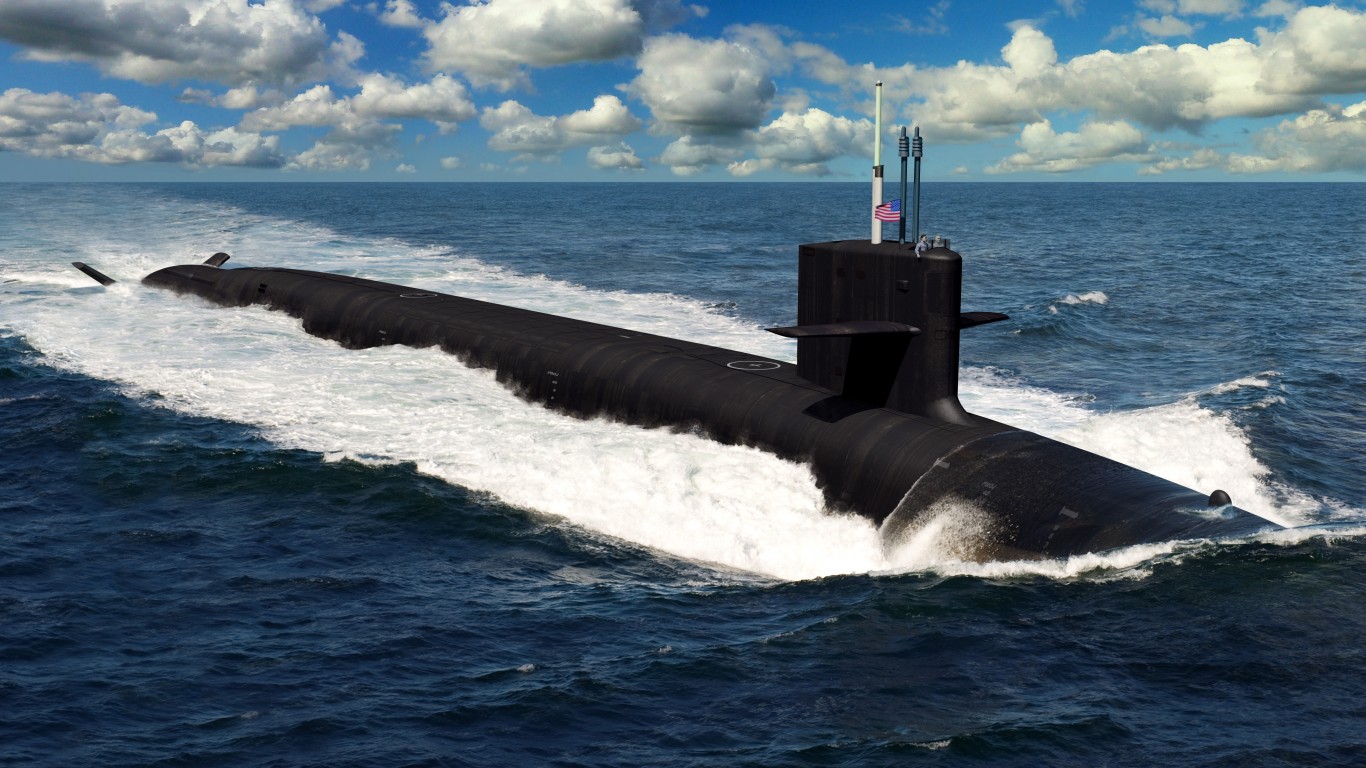
13. Submarines
> First developed: 1578
The earliest known blueprint for a submarine is often attributed to British mathematician William Bourne in 1578, but it would take decades for the first working prototype to emerge out of the workshop of Dutch inventor Cornelius Drebbel. The first submarine to use mechanical power would emerge in France in 1864, but it would be the German U boats of World War I that proved how submarines could be used effectively in naval combat.

14. Bayonet
> First developed: 17th century A.D.
The earliest firearms were so inaccurate and took so long to reload that the bayonet became a vital component, allowing the rifle to act as a spear during those frequent occasions when fighting turned into hand-to-hand combat. The advent of repeating firearms made the bayonet much less necessary, but it endures in smaller forms, such as the U.S. military’s M7 bayonet, a dagger that can be attached to the end of a modern combat rifle.
[in-text-ad-2]
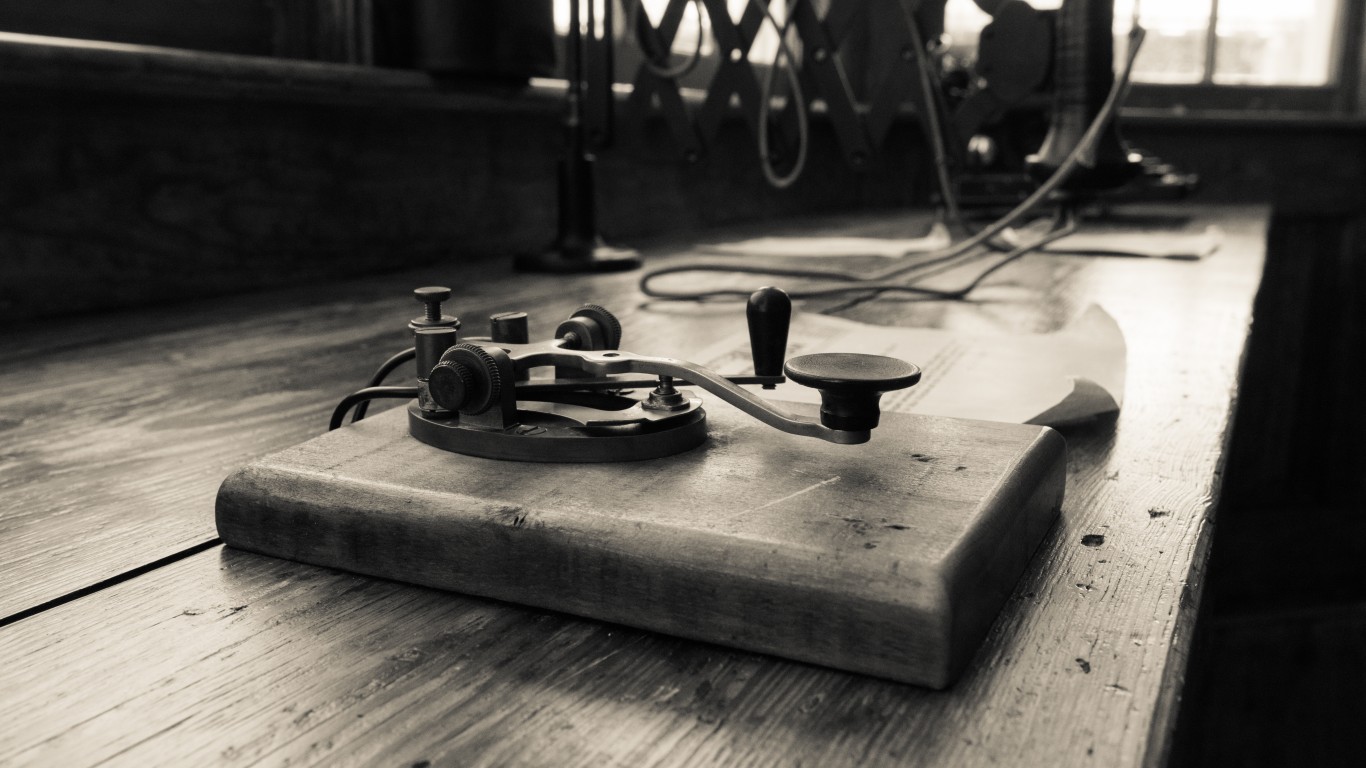
15. Telegraph
> First developed: 1844
The telegraph played an important role in the American Civil War. At the time, the U.S. already had a network of about 50,000 miles of wires that connected cities and towns, mostly in the North. But commanders on both sides of the conflict used telegraphs to quickly send orders to troops, which sped up re-deployments. Crucially, it allowed Abraham Lincoln to quickly issue orders directly, bolstering the power of the commander-in-chief. The telegraph was also used in both world wars, but it fell out of widespread use with the rise of the telephone and radio.

16. Barbed Wire
> First developed: 1873
The first patents for barbed wire emerged in France and the United States in the mid-19th century as a low-cost way to deter animals like cattle from breaking through or damaging fences. The technology quickly migrated to military use, notably in the Second Anglo-Boer War of 1899-1902 in what would later become South Africa. Barbed wire or its cousin razor wire has since been used in virtually every military or security operation, deterring the movement of soldiers and civilians and planted on security premiers of secured facilities, such as detention centers or checkpoints.
[in-text-ad]

17. The internal combustion engine
> First developed: 1859
The internal combustion engine has had a profound impact on human society since the first mass-produced passenger cars began rolling out of factories in the early 1900s. From a military perspective, it’s hard to imagine how modern wars would be fought without tanks, trucks, airplanes, jets, missiles, helicopters, trains, battleships, or submarines. Even before the modern motorized engine, steamships and locomotives powered under the same internal-combustion principles assisted in war efforts. Only very recently has battery-electric power begun to replace some of the uses of internal combustion engines in military operations.
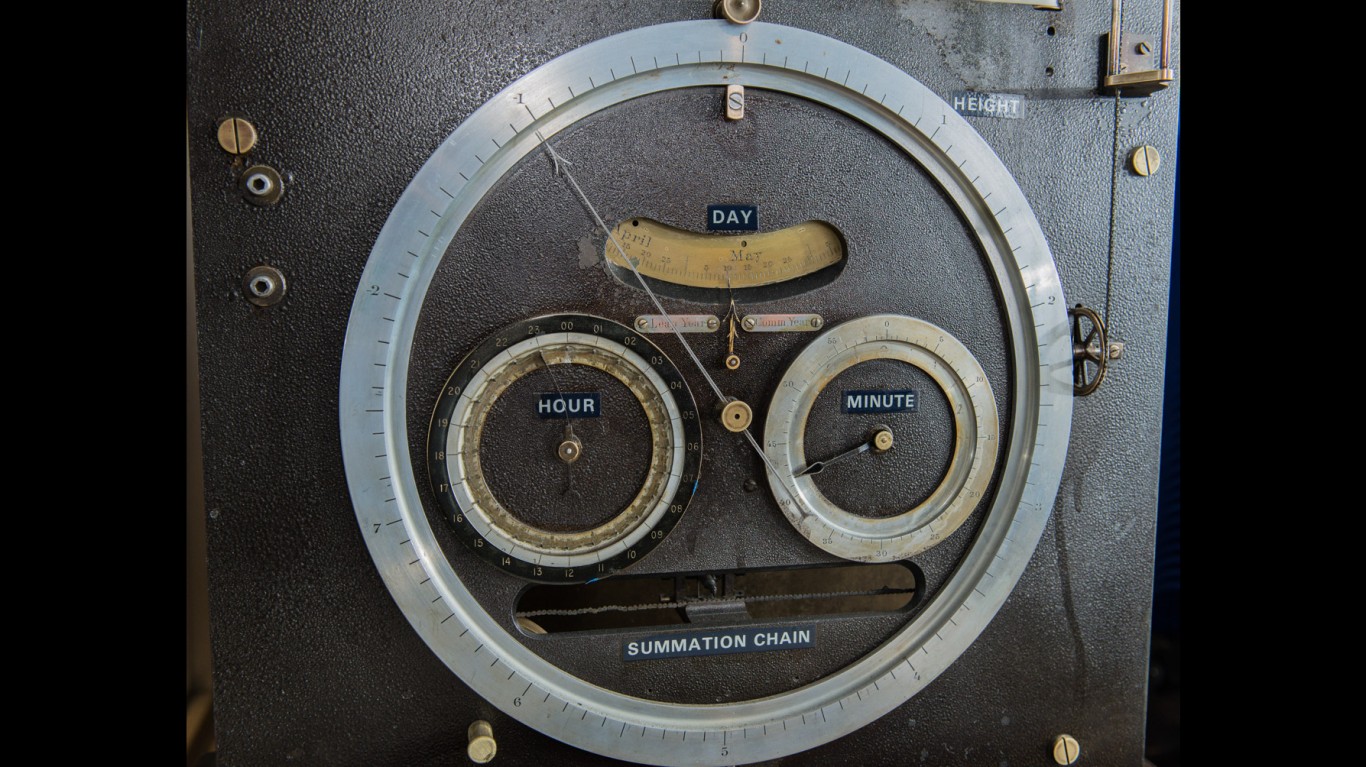
18. Tide predicting machine
> First developed: 1882
Arthur Thomas Doodson may be one of the most important architects of D-Day that you’ve never heard of. The British mathematician invented the most accurate tide-predicting machine up to that time. It crunched data from dozens of pulley wheels to help reduce the risk of ships running aground during low tide. The Invasion of Normandy required that troops land during low tide when Nazi obstacles and booby traps on the beaches were exposed. Doodson’s calculations determined that the best time to commence the Invasion of Normandy was June 5-7, 1944. D-Day began before dawn on June 6.

19. Radio
> First developed: 1896
The Mongols were famous for using horse-bound couriers and complex hand signals to direct their fighters to quickly advance, pivot, or retreat. But as modern armies grew larger, directing them became so difficult that countless soldiers were captured or lost simply because they didn’t receive orders in time. The telegraph was the first electrified use of wired and wireless military communications. But short-wave radio proved to be far more efficient in allowing pilots, tanks, and ships to communicate with each other in real time during the heat of battle.
[in-text-ad-2]
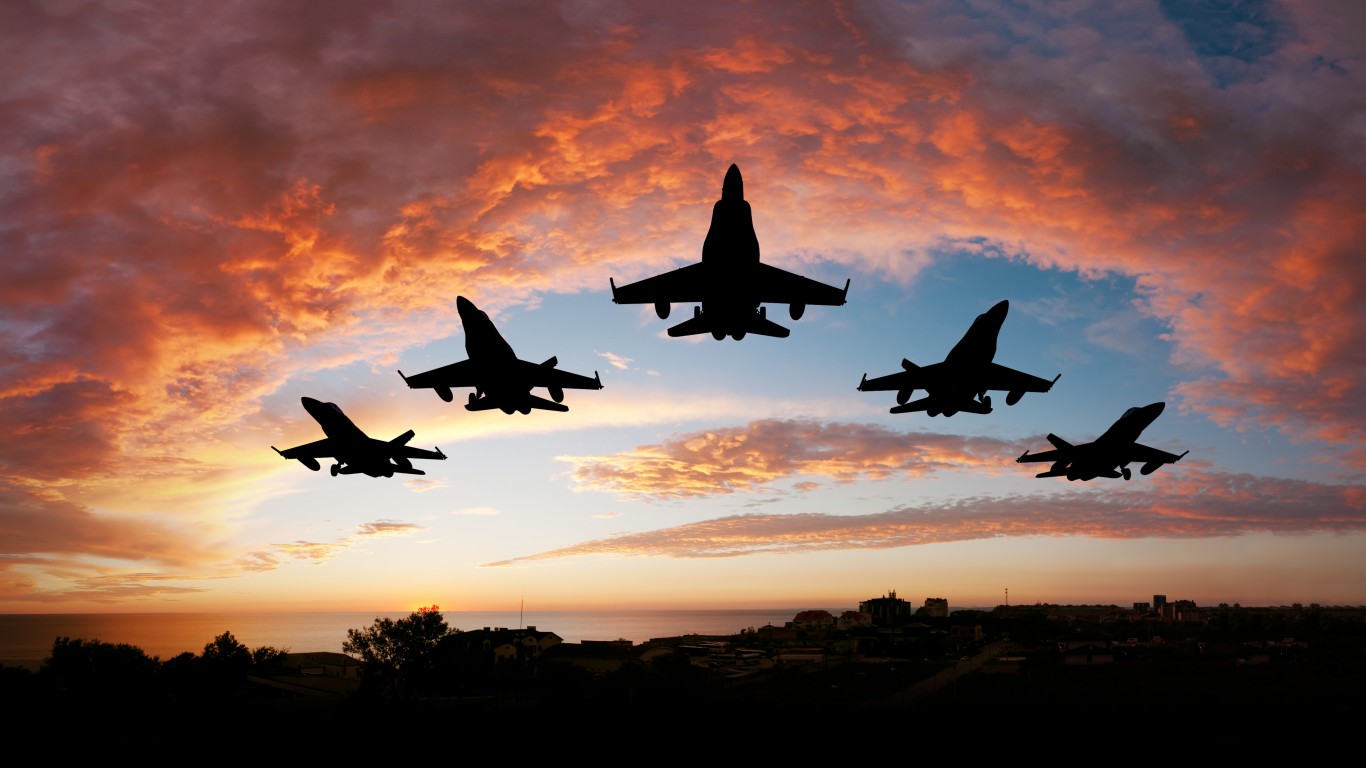
20. Airplanes
> First developed: 1903
Technologies sometimes merge to create new ways to wage warfare. Airplanes are a good example. It took the invention of the internal combustion engine to facilitate the invention of flight. The Italian were the first to use planes militarily in their fight against the Ottomans in Libya in 1911, just eight years after the Wright Brothers’ first flight in North Carolina. In World War I, European powers deployed hundreds of military aircraft. Another invention, radio, allowed pilots to communicate in real time with each other and with ground forces.

21. Continuous track treads
> First developed: 1904
Inspired by American grain harvesters, the first caterpillar tractor was built by California inventor Benjamin Holt. Described in a 1914 letter as a “Yankee machine” by a friend of British Col. E.D. Swinton, the rhomboid-shaped continuous track thread gave the tank its unique form of locomotion that handily rolled over barbed wire, thick hedgerows, and steep riverbed inclines. The continuous track is still widely used today.
[in-text-ad]

22. The nuclear bomb
> First developed: 1945
Richard Feynman, one of the many architects of the atomic bomb and a Nobel Prize-winning physicist, once described the excitement he felt at witnessing the first nuclear explosion in 1945 in New Mexico. But Feynman quickly became anxious about the implications of the weapon he and his colleagues had designed. Though only two of these powerful bombs have ever been used militarily â to definitively end the war in the Pacific with the bombings of Hiroshima and Nagasaki â the existence of these weapons primarily held by the U.S. and Russia, but also seven other countries, has altered geopolitical balances of power since the end of World War II.

23. Microwave radar
> First developed: 1939
First produced by British physicist Sir Robert Watson-Watt in 1935, the radar system was quickly seeded along the eastern and southern coasts of England. The Massachusetts Institute of Technology also advanced radar technology in the 1940s, accidentally – engineers were trying to build a weapon that could lob electromagnetic energy to kill pilots and crew in mid-air. The use of radar took off during World War II to detect enemy ships and planes.

24. Jet engines
> First developed: 1939
The British Royal Air Force filed the world’s first patent for a jet engine, but it would be the industrious Germans who built and fly the first prototype jet on Aug. 27, 1939. The first Allied jets took flight in May 1941. Though jets flew much faster than propeller planes, jet technology was still in its infancy and had little impact during World War II. The technology improved over the decades and jets eventually overtook propeller planes for most military and civilian uses.
[in-text-ad-2]

25. Night vision
> First developed: 1930s
The first primitive infrared devices were developed by the Germans prior to World War II and quickly adopted by the Allies during the war. But these devices, which amplified existing light to expose targets under nighttime conditions, were cumbersome and required large truck-mounted infrared searchlights that made easy targets. By the 1960s, night vision devices no longer required the searchlights, and they became an important tool during the low-light jungle conditions of the Vietnam War. Thermal imaging devices emerged in the 1970s and they played a significant role in Operation Desert Storm of the 1990s and beyond.

26. Electronic computers
> First developed: 1943
The first computers were people, most of them women, who performed complex calculations by hand. But during World War II, the U.S. developed machines that sped up making calculations for tasks like determining ballistic trajectories or cracking enciphered military communications. It’s through the advent of these machines, primitive by modern standards, that computer-programming languages emerged.
[in-text-ad]

27. Spy satellites
> First developed: 1959
In 1954, three years before the Soviets placed the first satellite in orbit, U.S. military researchers had determined the feasibility of spy satellites. In 1959, the U.S. launched a series of so-called KH-1 reconnaissance satellites as part of its Corona program. But it wouldn’t be until August 1960 that images on photographic film were successfully recovered from one of them. Modern spy satellites don’t have to manually send rolls of film back to earth thanks to the advent of wireless communications that allow satellites to beam back data.
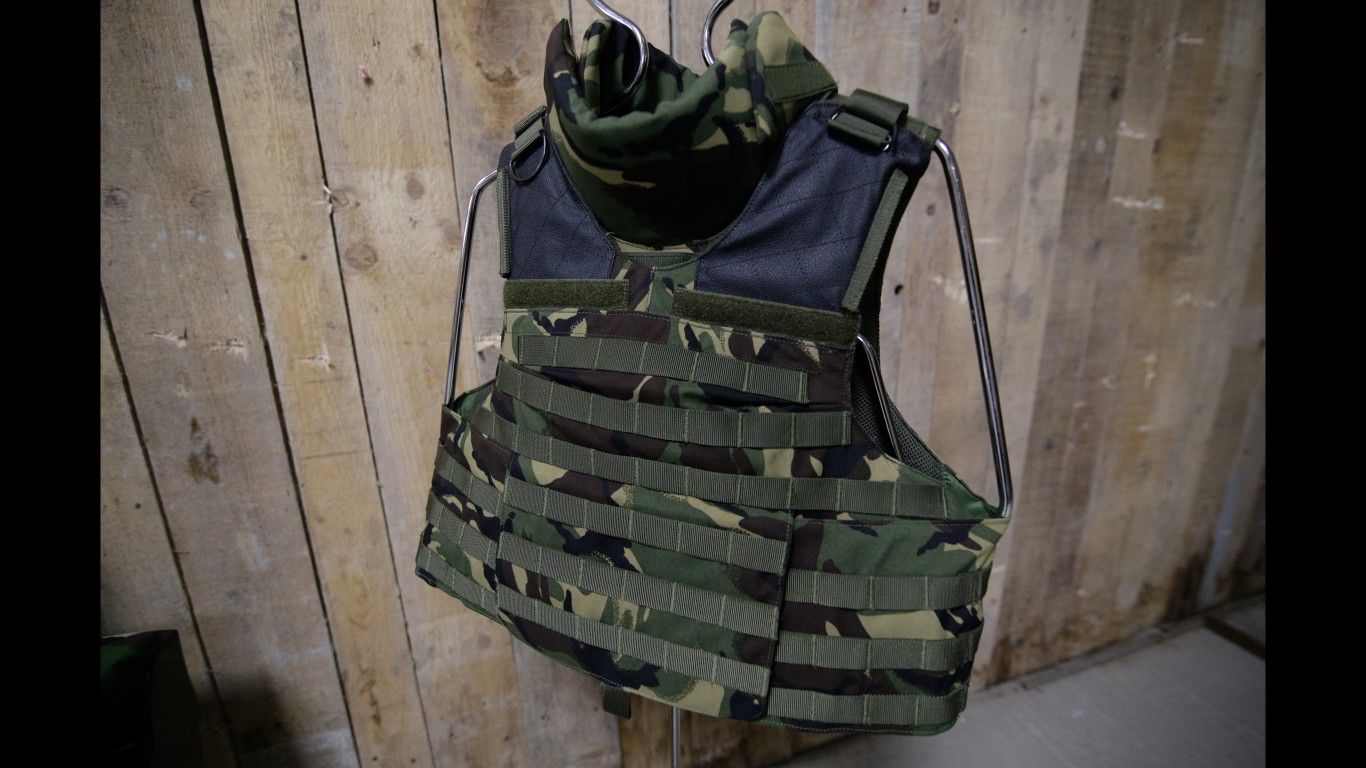
28. Kevlar body armor
> First developed: 1971
The earliest bulletproof vests were descendants of plate armor, but they proved to be mostly ineffective, as tests in Italy in the 1500s proved. Heavy, bulky metal bulletproof suits existed into the late 1800s, famously used by Australian outlaw Ned Kelly and his gang. The lighter, nylon-based flak jackets were deployed during World War II to offer modest protection from ammunition fragments. In the 1960s, DuPont invented Kevlar, a strong, lightweight synthetic fiber that has become the modern standard of bullet protection.

29. Global Positioning System
> First developed: 1978
The Global Positioning System navigation tool has its origins in the Cold War space race, as researchers developed ways to use satellites to track the locations of U.S. nuclear-armed submarines. According to NASA, GPS is “owned by the U.S. government and operated by the United States Air Force to meet national defense, homeland security, civil, commercial, and scientific needs.”
[in-text-ad-2]

30. The internet
> First developed: 1983
This ubiquitous technology is used by billions of people around the world, but we may just be starting to see how it might be deployed in modern military operations. The rise of sophisticated artificial intelligence and the Internet of Things, IoT, which connects physical devices allowing them to autonomously communicate with each other, will create new weapons of war. Low-latency broadband connectivity is also making possible soldiers who use sensors, wearables, cloud computing, and IoT support vehicles to create a more cohesive, interconnected fighting force.
Are You Ahead, or Behind on Retirement? (sponsor)
If you’re one of the over 4 Million Americans set to retire this year, you may want to pay attention.
Finding a financial advisor who puts your interest first can be the difference between a rich retirement and barely getting by, and today it’s easier than ever. SmartAsset’s free tool matches you with up to three fiduciary financial advisors that serve your area in minutes. Each advisor has been carefully vetted, and must act in your best interests. Start your search now.
Don’t waste another minute; get started right here and help your retirement dreams become a retirement reality.
Thank you for reading! Have some feedback for us?
Contact the 24/7 Wall St. editorial team.

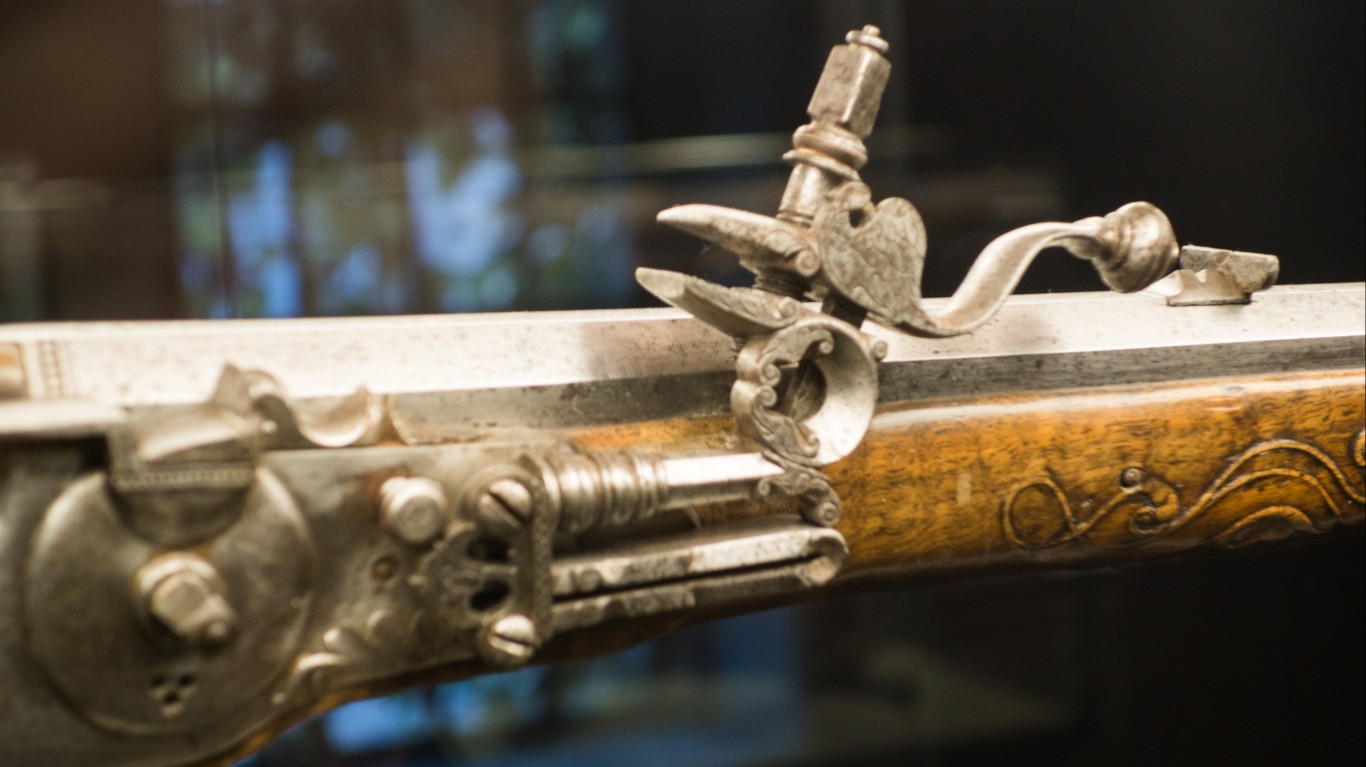
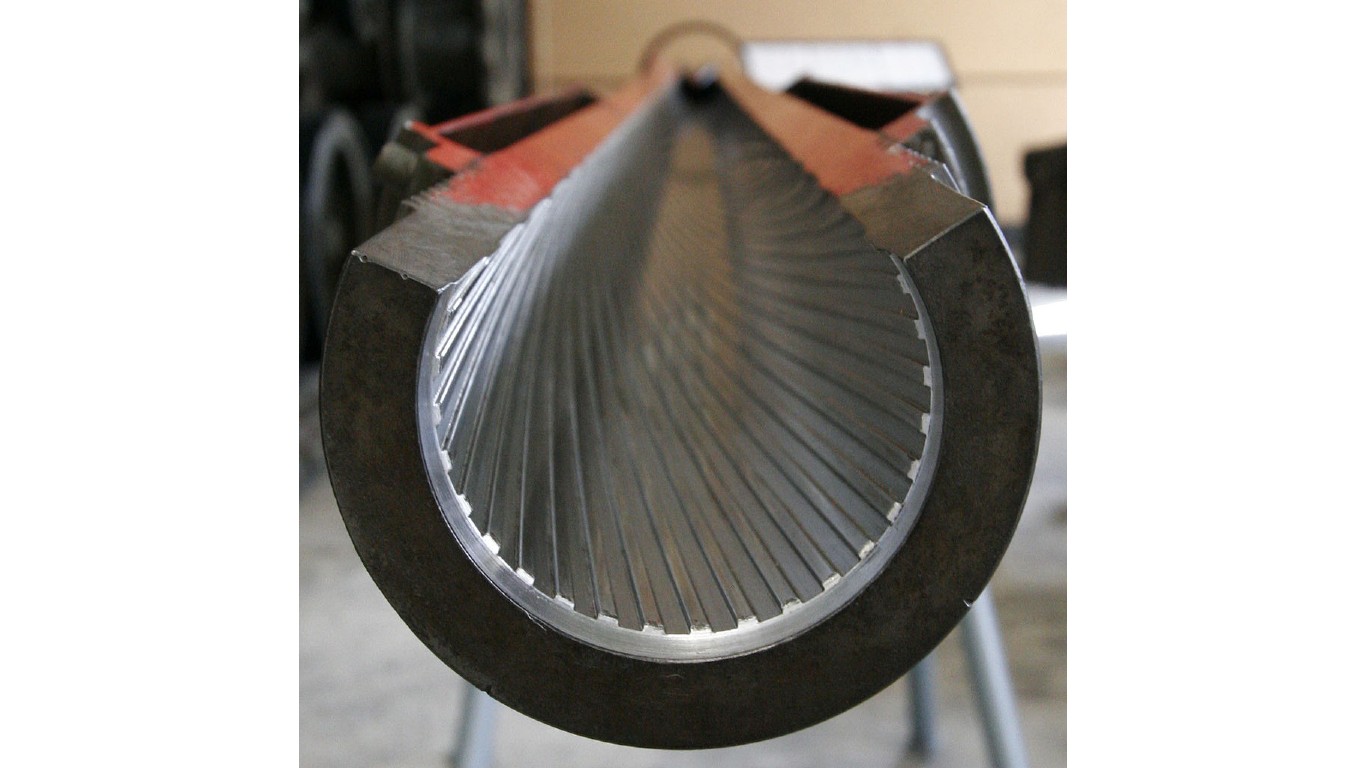
 24/7 Wall St.
24/7 Wall St.